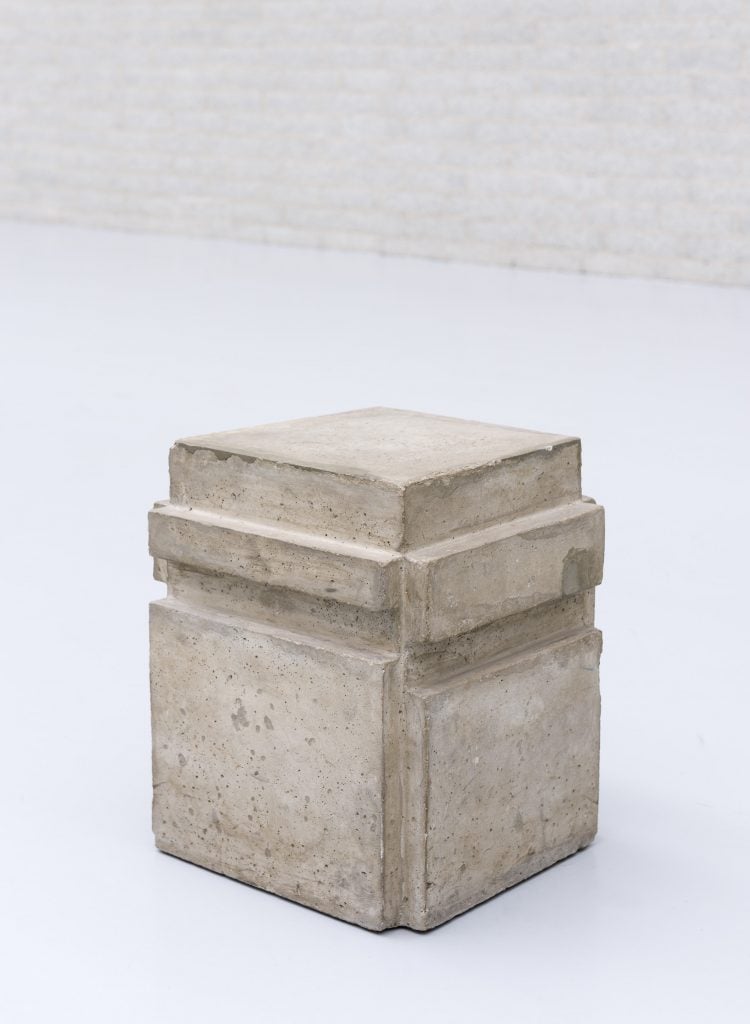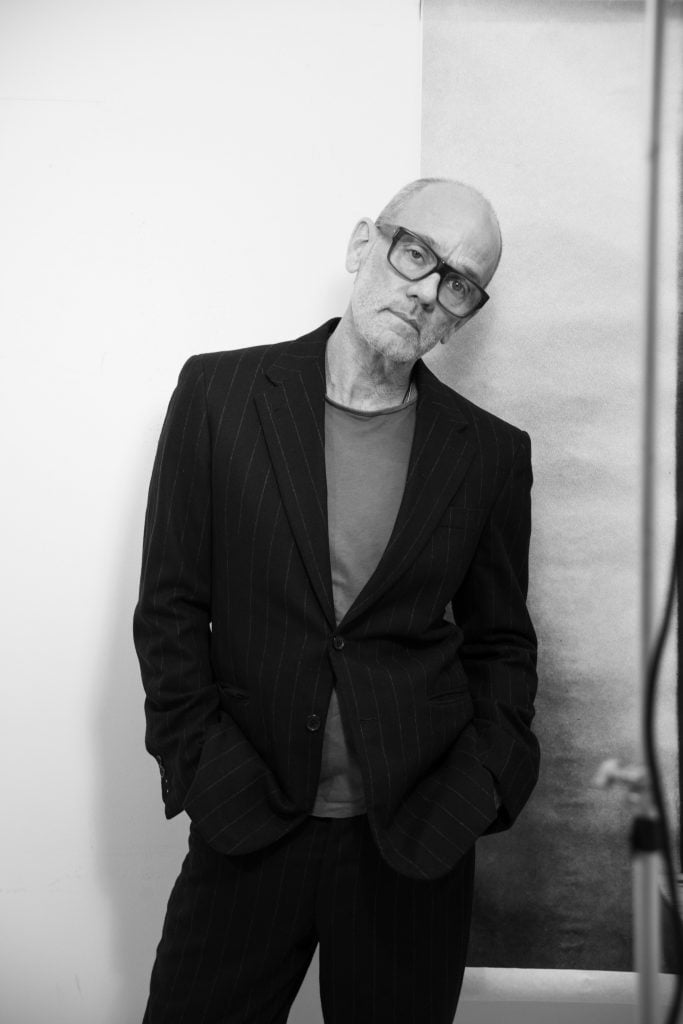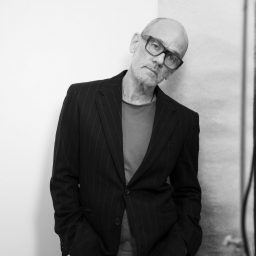People
Art We Love: REM Frontman Michael Stipe on Bruce Nauman’s Living and Breathing Sculpture
On 'A Cast of the Space Under my Chair.'

Legendary REM frontman Michael Stipe maintains a visual art practice that mines instinctual feeling from the conceptual. His multivalent works, spanning sculptures, ceramics, and photography, were most recently on view at his solo exhibition at ICA Milano. Accompanying the show was Even the birds give pause, his fourth photographic book encompassing his portraiture and other works-in-progress, now out on Damiani.
In my mind, I’ve kind of created a story around this piece, having no idea why Nauman did it, or what it was about, or what his inspiration was. I think of this work and Hans Haacke’s condensation box as anchoring the ’60s with this new conceptual take on art.
As someone born and raised for the most part in America, Nauman represents something of the West. As an artist and a lyricist, I’ve always been really intrigued by the American West. It just felt like this really dastardly, weird, mysterious place where things happen and you don’t really know why or what. I associate Nauman with that, whether that’s accurate or not.
I love how he jumps mediums. He doesn’t constrain himself to one medium, but it feels like he lives and breathes art—and allows for that to be his practice. It’s not the arrogance of, “I proclaim this art, therefore it is art.” It’s more like a way of looking at the world that we are moving through, and trying to extrapolate, interpret, and expand on it.
That’s what I feel the job of the artist is: to look at who we are, where we are, and what we are through a different lens, and to present that in a way that perhaps inspires or intrigues or gives pause. As a young man, I thought timelessness was an important aspect to art, but in fact, that’s kind of silly. The moment we’re moving through is actually much more interesting.

Michael Stipe. Photo courtesy of Fondazione ICA Milano.
I’ve seen pieces of Nauman’s that I don’t like that much, but that’s part of my joy of him as an artist. I don’t have to like everything. Speaking as a lyricist and songwriter, you can really tell by their missteps along with their triumphs when someone is experimenting and pushing the boundaries of what they’re capable of doing.
I don’t think it’s actually true or accurate, but in my mind, Nauman got the idea for A Cast of the Space Under My Chair from Brâncuşi. The Brâncuşi Atelier, for me, is like church. Every time I visit Paris, I have to go there and have a quiet moment on my own or with someone that I love at his atelier. I look at his use of plinths as a part of his sculptural practice, and I really can’t even express how much that altered and radically changed my idea of what is and is not possible in art. I take Nauman back to Brâncuşi. I don’t know if there’s any actual historical thread there, but in my mind there is.
I did this series of pieces based on my idea that Nauman was inspired or influenced by Brâncuşi and his plinths. And I just did my own version of it using Monobloc chairs; I think Nauman’s was a wooden chair. The Monobloc chairs are everywhere, all the time; they’re so ubiquitous that they’re kind of like trash. I titled my piece A Cast of the Space Under My Cheap Plastic Chair as an homage to him. I hope that if he ever even hears about it, I hope that he’s honored and flattered, because that was my intention.
I was a kid when this piece was created, and it’s literally anchored part of what would become my education in what is possible. For me, it’s very personal and it almost brings me to tears, although I’ve never seen the piece myself and I’ve only ever seen images of it.
That also happened to me once with Guernica in Madrid. I was at the Reina Sofía Museum with Patti Smith, and she loves the painting, but I didn’t know or had forgotten that it was even there. I got lost in the museum and I went looking for Patti. I turned this corner, and I saw she was looking at this wall that I couldn’t see. When I walked towards her, the look on her face was beatific. And I turned and there was Guernica. I’d never seen it before and I burst into tears. Obviously, we all know what it looks like, but to be in the presence of a piece of art like that is a profound experience. It’s not a sentimentality that I’m bringing to it, or a nostalgia, or a sense of history. There’s a resonance and an energy coming off of that piece.
That’s what I go to art for. That’s what I go to music for. That’s what I want from it. As an artist myself—and a fanboy—I want to be moved emotionally. I want to feel something. I want to carry that experience with me after I walk out of the gallery or the museum.
—Michael Stipe, as told to Min Chen
Art is more than a thing to hang on your wall. More often, it’s a font for happiness and joy. In “Art We Love,” we ask charismatic individuals from the art world and beyond to tell us about a work of art that they love, one that uplifts or inspires them.





